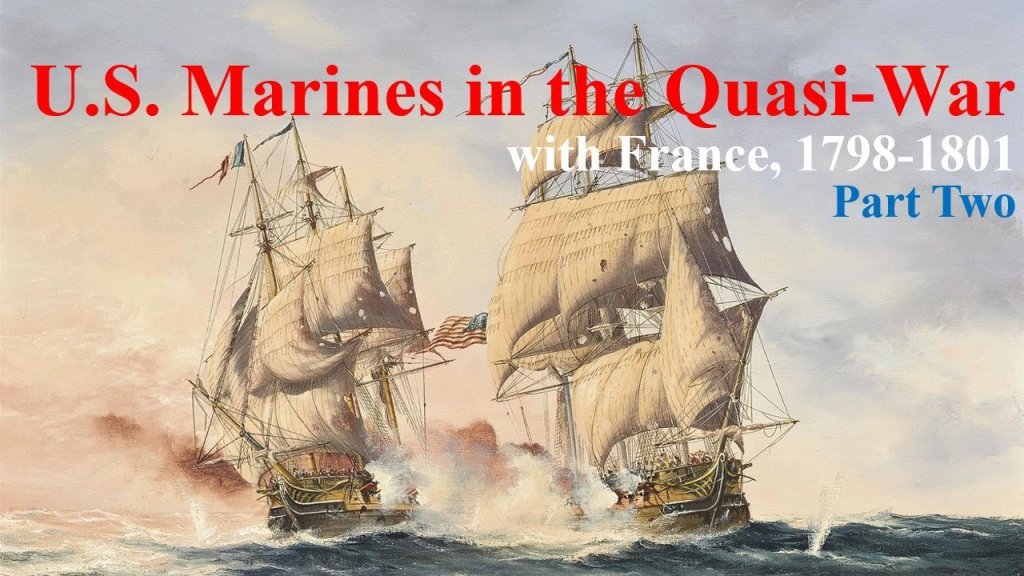In 1798, during the chaotic wave of anti-French sentiment, the United States found itself on the brink of war with France. In response, Congress established a “Temporary Army” and created the Department of the Navy, marking the birth of the U.S. Navy. Many credited President John Adams with this achievement, dubbing him the “Father of the Navy.” Under his leadership, the Navy grew quickly, boasting 50 ships in just two years. Meanwhile, Congress authorized private ships to intercept French merchant vessels, setting the stage for what became known as the “Quasi-War” – a conflict without an official declaration of war.

However, Adams had a very different approach when it came to the army. Unlike the Navy, he had little interest in building a large standing army. He believed a powerful military could lead to military dictatorship, which would threaten liberty more than protect the nation. But Congress thought otherwise, passing a law to fund the army with a land tax, marking the first time the federal government taxed its citizens directly. Naturally, the army needed leadership, and Adams, while the commander-in-chief, wasn’t keen on military matters. He decided to nominate George Washington as the army’s commander. The move was unexpected, especially considering Washington was 66 years old and in poor health.
Many questioned Adams’ sanity, especially considering Washington’s declining health. While Washington would not manage day-to-day operations, Adams’ decision raised concerns. The real power, many assumed, would rest with Alexander Hamilton, Washington’s former aide-de-camp, who had always been a central figure in Washington’s military strategy. The situation became a delicate political dance.
Washington, ever the tactician, didn’t immediately accept the offer. Instead, he wrote a letter to Hamilton, revealing he would only accept the role if Hamilton served under him. Hamilton, ever the ambitious strategist, agreed to serve as “Inspecting General,” a rank just below Washington’s, ensuring his influence over military affairs.
When Adams received Washington’s response, he was already in the process of submitting Washington’s nomination to Congress. However, there was a key issue: Washington had insisted on naming Hamilton as his second-in-command. Adams, wary of Hamilton’s influence, suggested a different order: Henry Knox, followed by Charles Pinckney, and finally Hamilton. Adams’ decision was driven by political strategy, as Knox was the former Secretary of War, and Hamilton’s rise was seen as a threat to Adams’ power.
Washington, however, was not to be outdone. He wrote Adams a detailed letter, explaining why Hamilton was the best choice, despite his lower military rank during the Revolutionary War. Washington praised Hamilton’s unparalleled military acumen, acknowledging his ambition but framing it as a strength rather than a weakness. Washington’s letter made it clear: without Hamilton, he would not return to lead the army.
Ultimately, Adams had to concede, but the damage to his relationship with both Washington and Hamilton was done. The new army was formed, but Adams, feeling increasingly sidelined, saw Hamilton as the true power behind the scenes. Despite this, Adams pushed for peace with France, feeling the conflict was unnecessary. His hope was that diplomacy could avoid a full-scale war.
As tensions mounted, Adams received key information from his envoy to France, John Marshall, who assured him that France was not eager for war. This confirmed Adams’ belief that peace was possible, and in December 1798, he expressed his desire for peace in his State of the Union address. By January 1799, Adams had received further confirmation that peace talks could begin.
The Quasi-War ended without a single formal battle, and the diplomatic efforts led by Adams helped to avoid a conflict that could have further fractured the young nation. Adams’ willingness to engage in delicate diplomacy rather than rely solely on military force ultimately secured his place in history.
This chapter of U.S. history illustrates the delicate balance between military power and diplomacy. Adams’ leadership and his ability to trust in peace over war set a precedent for future U.S. foreign policy. The lesson here is clear: sometimes, the greatest victories come not from battlefields, but from the courage to pursue peace against the tide of public opinion.

No comments yet.